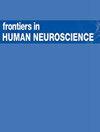重新审视胼胝体与创造力
IF 2.7
3区 医学
Q3 NEUROSCIENCES
引用次数: 0
摘要
1969年,罗杰-斯佩里的同事、曾为斯佩里的 "分裂脑 "研究参与者实施胼胝体切除术的神经外科医生约瑟夫-博根撰写了一篇文章,副标题为 "胼胝体与创造力"。文章论证了胼胝体和大脑半球特化在创造力中的关键作用。基于创造力的四个阶段模型(学习、孵化、启发、完善)和斯佩里的创新研究,博根夫妇提出,在完整的大脑中,创造力依赖于胼胝体的两种对立功能:(a)半球间抑制,以促进学习和孵化期间独特专业化处理中心的同时和独立活动;(b)半球间促进,以支持产生启发的双半球整合和协调的增强。考虑到过去 50 年的科学发现,本文重新审视了博根斯的理论。我们首先回顾了分脑研究的相关发现,然后简要探讨了神经畸形参与者的创造力与胼胝体结构和功能的关联研究结果。最后,我们将深入讨论胼胝体缺失症(ACC)患者的创造力问题。这三个研究方向有力地支持了博根和博根在 1969 年提出的理论,并进一步阐明了胼胝体在创造性认知中的关键和独特作用。本文章由计算机程序翻译,如有差异,请以英文原文为准。
The corpus callosum and creativity revisited
In 1969 Joseph Bogen, a colleague of Roger Sperry and the neurosurgeon who performed commissurotomy on Sperry’s “split-brain” study participants, wrote an article subtitled “The Corpus Callosum and Creativity.” The article argued for the critical role of the corpus callosum and hemispheric specialization in creativity. Building on a four-stage model of creativity (learning, incubation, illumination, refinement) and Sperry’s innovative studies, the Bogens posited that in the intact brain, creativity relies on two opposing functions of the corpus callosum: (a) interhemispheric inhibition to facilitate simultaneous and independent activity of uniquely-specialized processing centers during learning and incubation and (b) interhemispheric facilitation to support the increased bi-hemispheric integration and coordination which produces illumination. This article revisits the Bogens’ theory considering scientific discoveries over the past 50 years. We begin by reviewing relevant findings from split-brain studies, and then briefly consider findings from studies that examine the association of creativity with callosal structure and function in neurotypical participants. Finally, we provide an in-depth discussion of creativity in persons with agenesis of the corpus callosum (ACC)—the congenital absence of the corpus callosum. These three lines of inquiry strongly support the theory suggested by Bogen and Bogen in 1969 and provide further clarification regarding the critical and unique role of the corpus callosum in creative cognition.
求助全文
通过发布文献求助,成功后即可免费获取论文全文。
去求助
来源期刊

Frontiers in Human Neuroscience
医学-神经科学
CiteScore
4.70
自引率
6.90%
发文量
830
审稿时长
2-4 weeks
期刊介绍:
Frontiers in Human Neuroscience is a first-tier electronic journal devoted to understanding the brain mechanisms supporting cognitive and social behavior in humans, and how these mechanisms might be altered in disease states. The last 25 years have seen an explosive growth in both the methods and the theoretical constructs available to study the human brain. Advances in electrophysiological, neuroimaging, neuropsychological, psychophysical, neuropharmacological and computational approaches have provided key insights into the mechanisms of a broad range of human behaviors in both health and disease. Work in human neuroscience ranges from the cognitive domain, including areas such as memory, attention, language and perception to the social domain, with this last subject addressing topics, such as interpersonal interactions, social discourse and emotional regulation. How these processes unfold during development, mature in adulthood and often decline in aging, and how they are altered in a host of developmental, neurological and psychiatric disorders, has become increasingly amenable to human neuroscience research approaches. Work in human neuroscience has influenced many areas of inquiry ranging from social and cognitive psychology to economics, law and public policy. Accordingly, our journal will provide a forum for human research spanning all areas of human cognitive, social, developmental and translational neuroscience using any research approach.
 求助内容:
求助内容: 应助结果提醒方式:
应助结果提醒方式:


